Convent of Santa Maria degli Angeli
Convent of Santa Maria degli Angeli
The Convent of Santa Maria degli Angeli, founded in 1635, is located at the highest point of the village (along Via San Rocco) and boasts a panoramic view of the entire gulf. Originally established by the Capuchin Fathers, it is now maintained by the Vocationalist Fathers.
The convent’s current appearance is the result of modern renovations that adapted the ancient structure for use as a boarding school.
The façade is distinguished by crenellations along the upper edges of the roofline and the church’s pediment, which is integrated into the structure. On the stone lintel above the entrance door, curiously engraved upside down, is the date 1635. Above it, in the lunette, is a charming fresco—likely from the same period, known as La Porziuncola. This image is venerated by locals, who recall a miracle said to have occurred in the 19th century after the convent was suppressed in 1867. According to legend, a nonbeliever attempted to test his rifle’s cartridges by firing at the faintly visible figures in the fresco. The bullets, however, allegedly ricocheted and struck him, blinding the sacrilegious shooter. To this day, the marks left by the pellets can still be seen—carefully preserved during restoration.
Inside, the convent features a cloister, a church, dormitories, and gardens designed for meditation.
The cloister still contains its original sandstone well and is surrounded by rooms with original barrel-vaulted ceilings.
The church includes three chapels on the left side, each accessed via a large arch from the main nave and each echoing its barrel vault on a smaller scale. These chapels are low and each houses a beautiful wooden icon. Of particular note is the third chapel’s icon, which depicts Saint Felix of Cantalice, remarkable for the precision of its features.
On the right side, aligned with the chapels but set in blind arches, are three 18th-century paintings, likely crafted locally. These works stand out for their elegant composition.
However, the true jewel of the church is the wooden tabernacle, crowned by a large 16th-century crucifix. According to local tradition, both the crucifix and the statue of Our Lady of the Rosary arrived in Perdifumo through miraculous means.
What makes the tabernacle especially unique – beyond its elegant Baroque form – is the symbolic significance of its figures and their arrangement. At the center is Saint Michael the Archangel, sculpted in relief on the tabernacle door. On either side are two Franciscan saints. It is believed that the unknown sculptor intended to visually represent the continuity between the old monastery of Sant’Arcangelo and the new one founded by the Franciscans.
